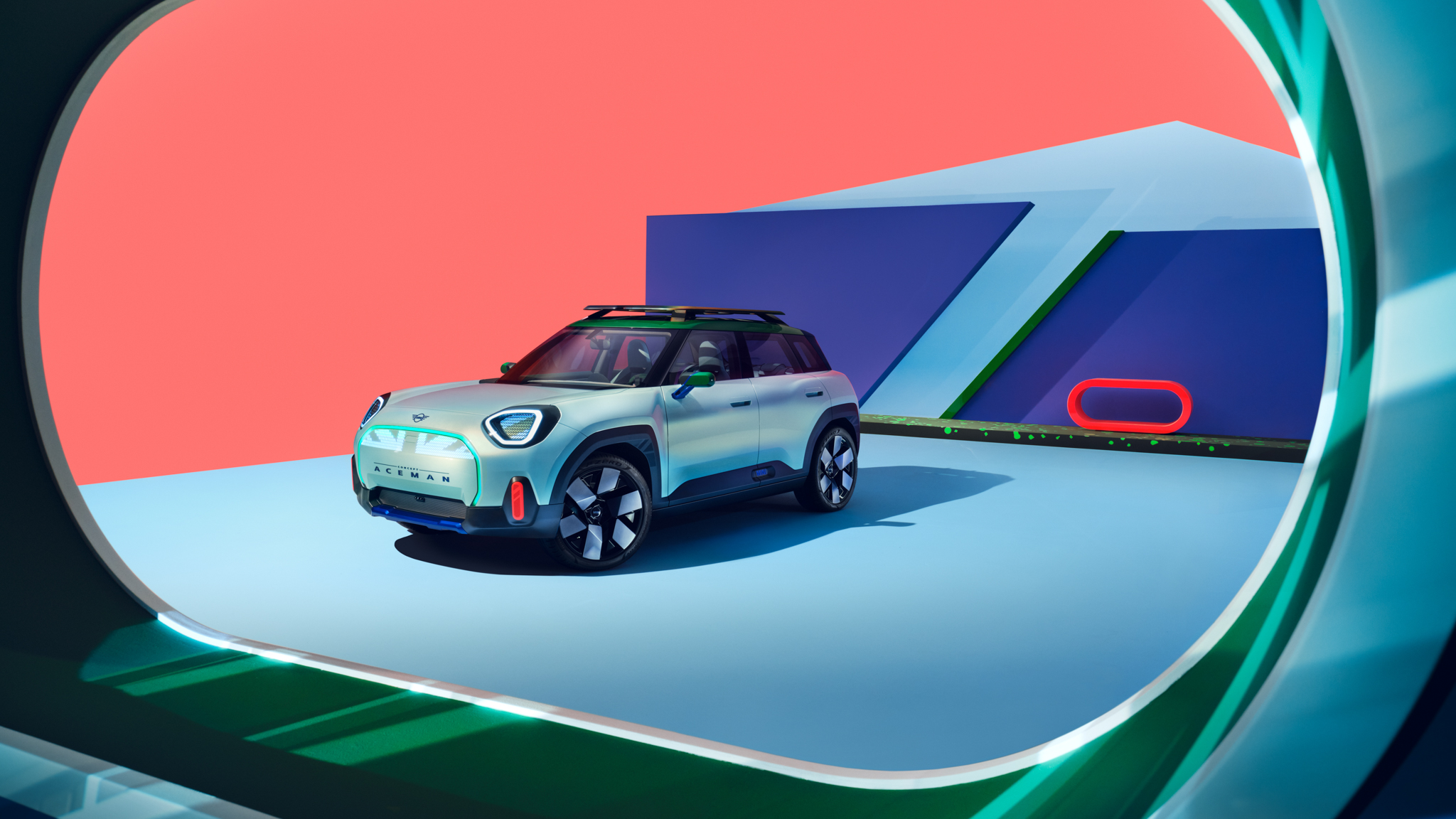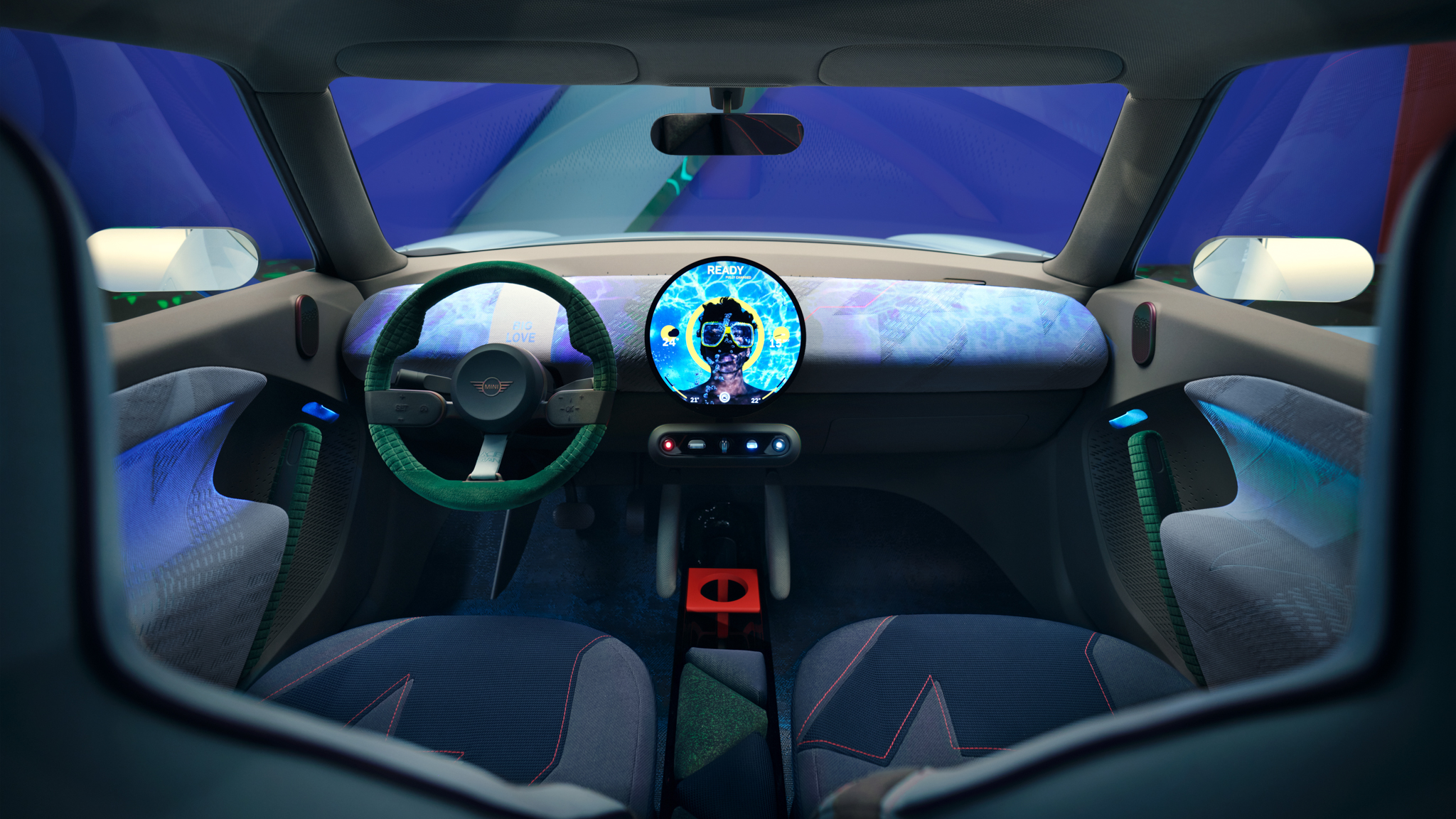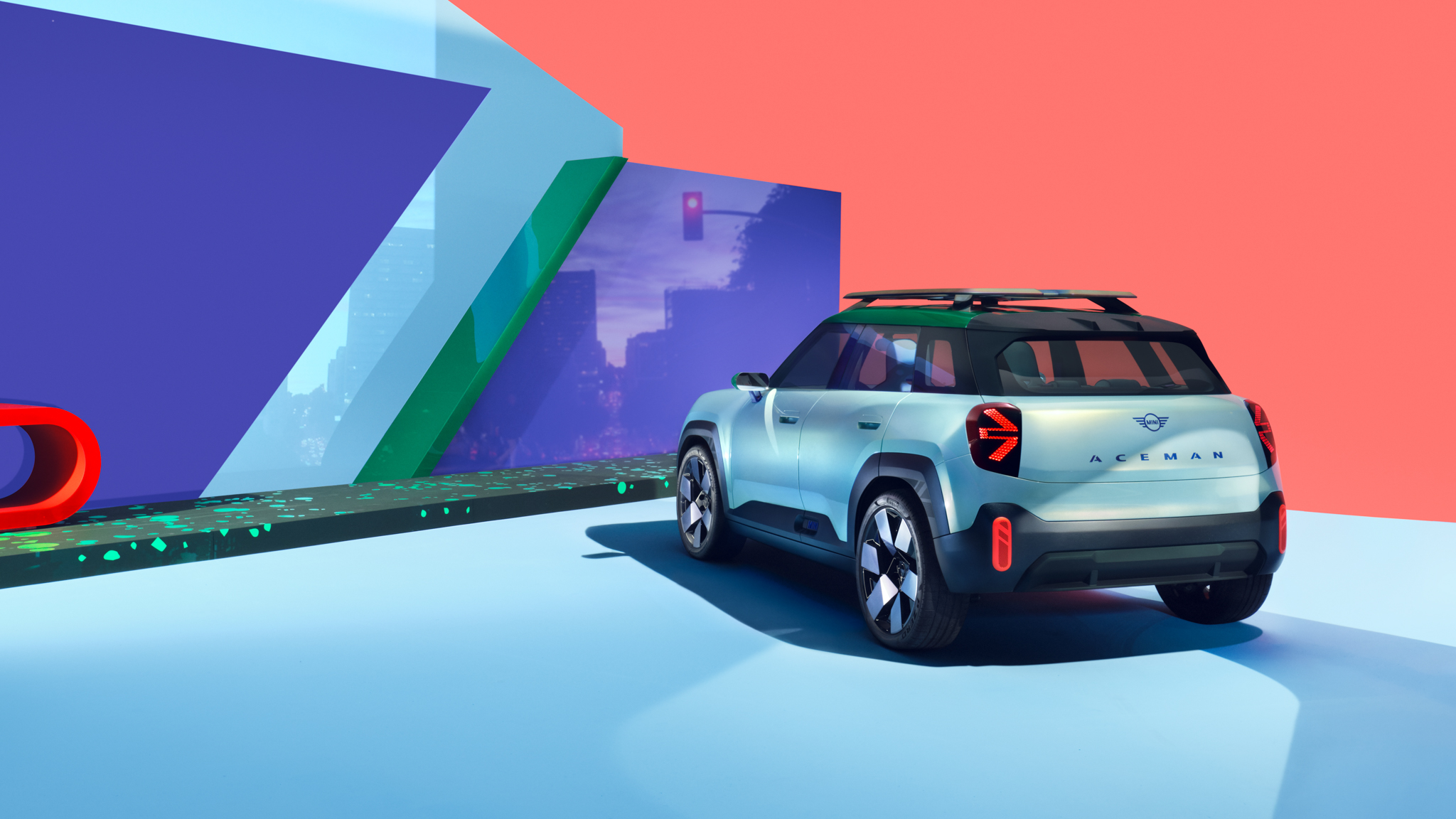Here’s why Mini Aceman EV has projectors beaming onto its dashboard
The electric concept is expected to go into production in 2024


Mini has revealed a new electric concept car, called the Aceman. On the outside it’s a four-door crossover aimed at the urban market and to slot between the Mini hatchback and a new, larger Countryman due out in the future.
As smart as the Union Jack-festooned outside looks, it’s the interior where things start to get interesting. Mini says the design of the fabric-covered dashboard was styled like a sound bar, extending the entire width of the cabin and sitting proud of the windscreen scuttle, where it is mounted to a support structure inspired by the Union Jack. Owner BMW sure does like to remind us all of Mini’s British roots.
Mounted to the sound bar-like dashboard is a central infotainment display, echoing that of the current Mini range, which is in turn inspired by the speedometer of the 1959 original. The display uses a circular OLED panel for the first time, and Mini claims it is the first manufacturer to fit such a screen to a car. It also says the production version of the Aceman, due out in 2024, will have an infotainment system built on an Android Open Source software stack, which is also a first for the brand.

Save for a bank of physical dials and toggle switches beneath the display, the rest of the dashboard is blank. Until the car is turned on, and a pair of projectors in the roof lining beam down onto the fabric-covered dashboard. Although undoubtedly a concept car novelty (at least for now), the projectors are surprisingly well-integrated, just behind the windscreen where they can’t dazzle or distract the driver or pedestrians.
The idea is, these project colours and patterns onto the dashboard in a bid to complement the ambient LED lighting found elsewhere. But beyond this, Mini also sees a future where the projections could be used to enhance the infotainment system, perhaps with mapping and other interface elements shown right across the dashboard.
Although unlikely to appear on the production version of the Aceman when it arrives in 2024, Mini has put some serious thought into how the system would work, and why it chose projectors instead of adding more displaying and lighting modules to the dashboard itself.

This choice is to do with homologation and crash safety, Mini says, with projectors in the roof lining a safer option than harder, less forgiving displays and lighting modules in the dashboard.
Get all the latest news, reviews, deals and buying guides on gorgeous tech, home and active products from the T3 experts
The Aceman has a leather-free interior, and also does away with chrome too. The dashboard is made from a knitted and recycled textile, while the steering wheel and interior door handles are laminated with a dark green velvet velour that makes for a more interesting look and feel than conventional leather, real or otherwise.
On the outside, the Aceman concept is fitted with front and rear lights packed full of LEDs capable of playing various sequences and patterns. Although the front lights are purely for the concept car, Mini hopes the rear units can be homologated for road use, where personalised patterns could be illuminated when the car is locked and unlocked.

Mini intends to put the Aceman into production in 2024. It will be the same length as this concept, at about 4.05 metres, but won’t be as wide as the car seen here, which sits at a squat 1.99m. The car will fit into Mini’s range above the three-door hatchback and below a next-generation electric Countryman that will be larger than the current model. The Aceman will use the same platform as the next-generation electric three-door, which is expected to have a range of between 200 and 250 miles, and a power output of up to 160kW.
Alistair is a freelance automotive and technology journalist. He has bylines on esteemed sites such as the BBC, Forbes, TechRadar, and of best of all, T3, where he covers topics ranging from classic cars and men's lifestyle, to smart home technology, phones, electric cars, autonomy, Swiss watches, and much more besides. He is an experienced journalist, writing news, features, interviews and product reviews. If that didn't make him busy enough, he is also the co-host of the AutoChat podcast.
